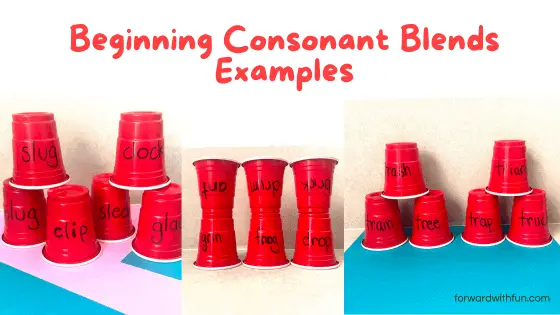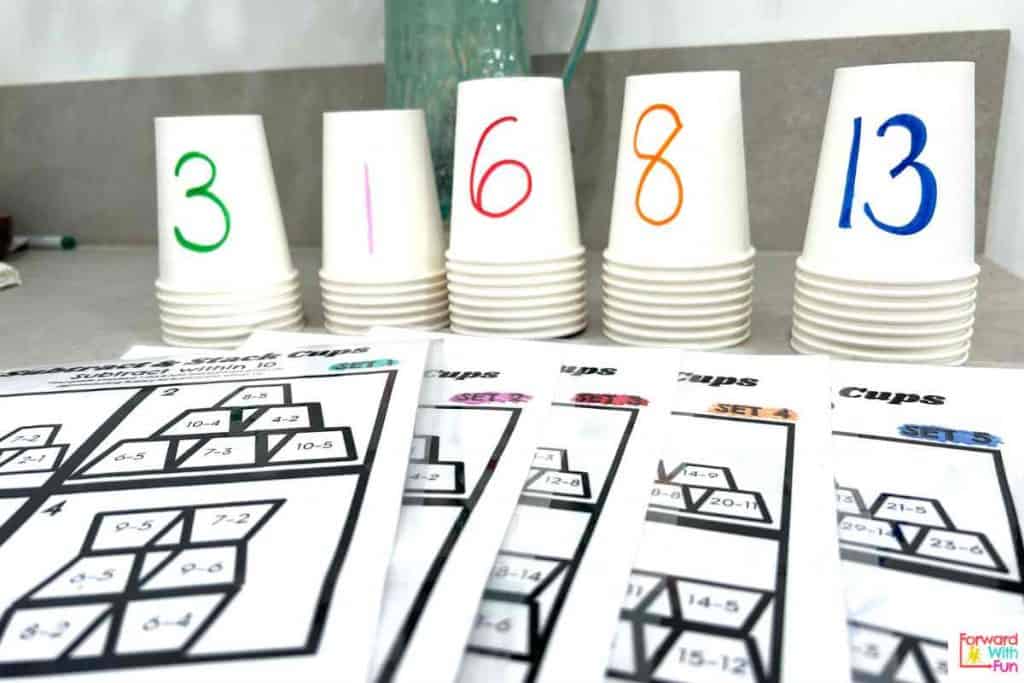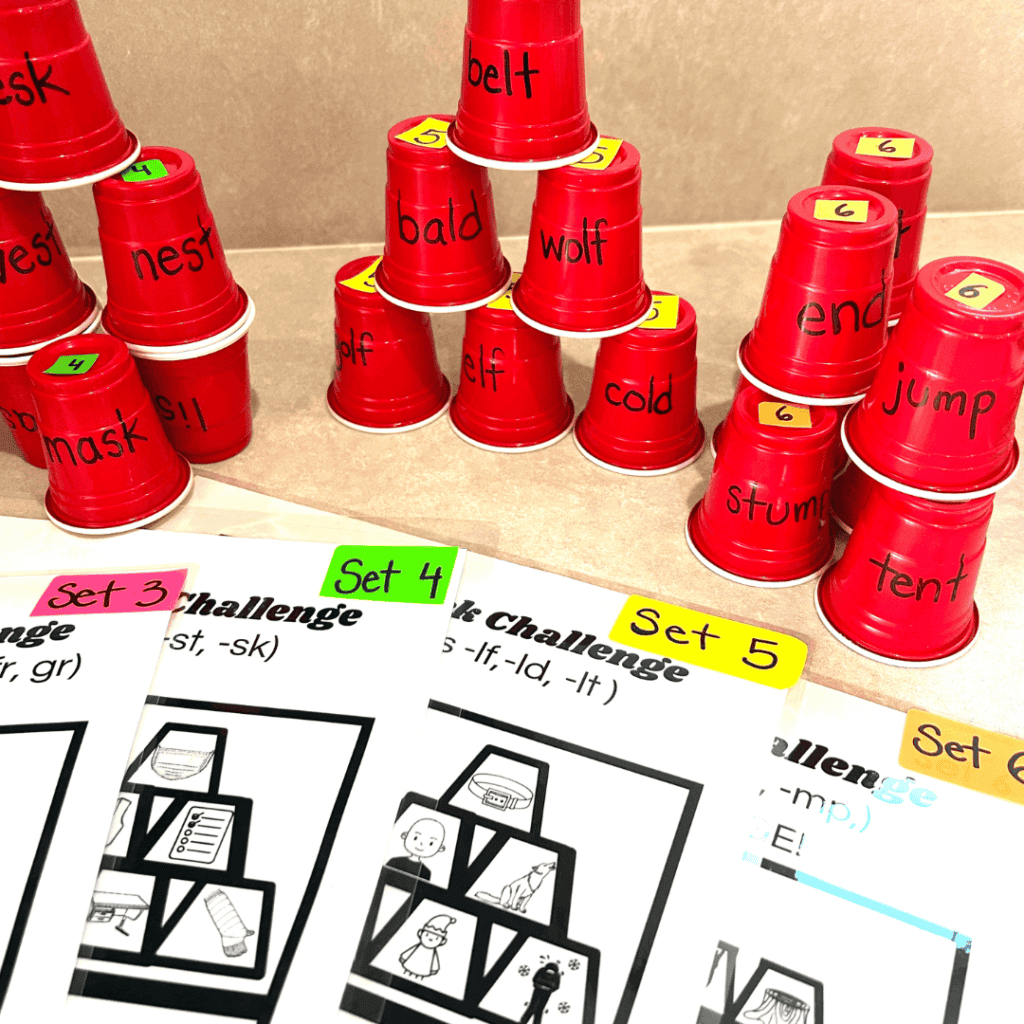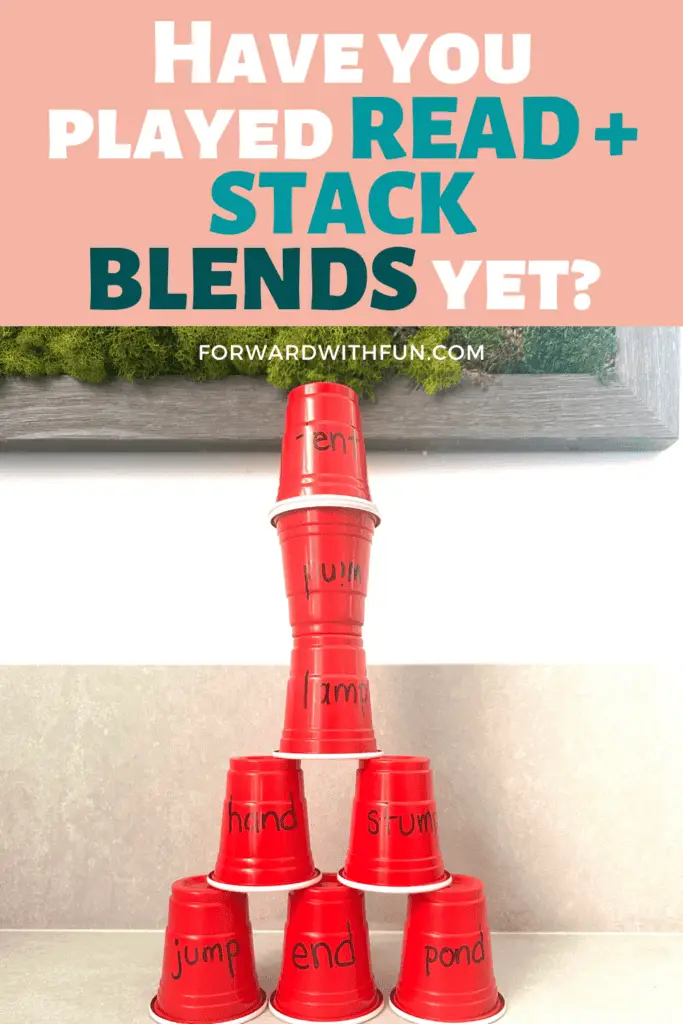
While teaching first grade intervention, I had a hard time finding engaging consonant blends activities that would capture my struggling readers' attention! So I took our wildly popular kindergarten cup stacking challenge and developed a version that incorporates all the blends my first graders needed to learn.
Print and begin stacking cups to match the pictures. Some challenges include 6 cups, some 8, and some 9! I had to pry these cute little cups from my soon-to-be first grade daughter's hands, who can't resist a hands-on approach that enhances learning through play.

*As an Amazon associate, I may get a teensy commission from any purchases made through my links. Thank you!
The six sets of consonant blends activities will be a comprehensive way to practice reading consonant blends with first graders. I would even suggest them to advanced kindergartners and second graders needing more practice.


What you need to play:
To organize, you can write the words in different colors, as shown with the subtraction cups, or use labeling stickers like I did for our consonant blends cups. Some challenges have 6 cups, some have 8, some have 9. So you have differentiation too! Win, win!


Teaching blends to first graders involves a few key things:
Before kids read and write blends, they need to be able to hear that the blend is made up of multiple consonant sounds. Orally segmenting works into their smaller parts and blending sounds into whole words is key!
Example of what I would say while teaching this skill: What word am I making? /s/ /k/ /i/ /m/. Blend the SOUNDs together to make the word "skim!" Now let's segment that word. Put up 4 fingers and touch a new finger for each sound: /s/ /k/ /i/ /m/.
I find that when I explicitly teach consonant blends, then follow up with a game, the information gets put to practice in a meaningful way. For direct instruction, I love the free resources provided by UFLI Toolbox! They have a great scope of sequence that helps me teach consonant blends in an order that make sense to new readers.

The key to teaching blends in a fun way is to incorporate games and activities that appeal to young learners. Activities like cup stacking with blend words provide a tactile experience that keeps children engaged while they learn. They'll be less flustered by the new and possibly difficult skill, because they'll be in a fun frenzy of cup stacking. It's almost like they don't know they're learning!
First graders typically begin with two letter beginning consonant blends such as "bl," "cr," "dr," in words like blip, cram, and drop. Kids are most likely to struggle with the "tr" confusing it for "chr" and the "dr" confusing it for "jr." I find that making an anchor chart for those specific sounds can help serve as a visual reminder.
The Cup Stacking Challenges for consonant blends not only include all the beginning blends listed but also the very important ending blends! You'll find ending blends with n, m, l, and s in these activities in words such as jump, desk, hand.
When teaching blends to first graders, it's beneficial to start with blends that appear frequently in simple, everyday words. I always begin with beginning consonant blends that include the letter L, then I move on to ones that have the letter R next. Focus on blends like "bl," "cl," and "fl" initially, as they are encountered early in basic vocabulary and are easier for young learners to grasp. As children become more confident, gradually introduce blends that are slightly more challenging but still commonly used.
Ready to try these engaging consonant blends activities with your first graders? Explore our printable resources designed to make learning blends a delightful adventure!
Download your First Grade Frenzy Consonant Blends Games Now: bring joyful learning into your classroom!